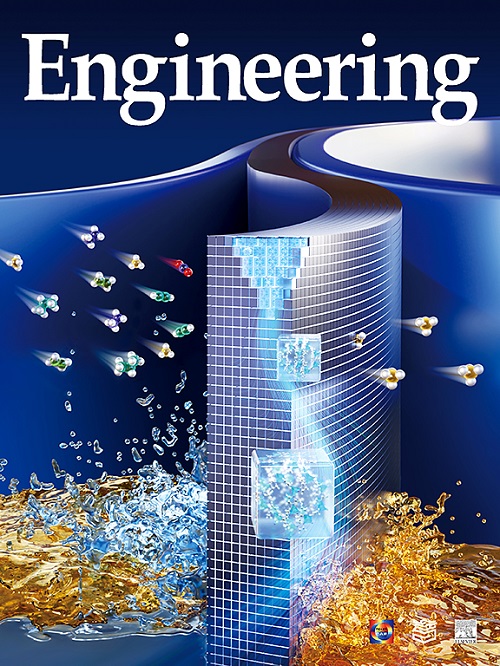Mechanical Energy Drives the Growth and Carbon Fixation of Electroactive Microorganisms
IF 10.1
1区 工程技术
Q1 ENGINEERING, MULTIDISCIPLINARY
引用次数: 0
Abstract
Phototrophy and chemotrophy are two dominant types of microbial metabolism. However, to date, the potential of the ubiquitous and versatile mechanical energy as a renewable energy source to drive the growth of microorganisms has remained unknown and not utilized. Here, we present evidence in favor of a previously unidentified metabolic pathway, in which the electronic energy produced from mechanical energy by the piezoelectric materials is used to support the growth of microorganisms. When electroactive microorganism Rhodopseudomonas palustris (R. palustris; with barium titanate nanoparticles) was mechanically stirred, a powerful biohybrid piezoelectric effect (BPE) enabled sustainable carbon fixation coupled with nitrate reduction. Transcriptomic analyses demonstrated that mechanical stirring of the bacteria–barium titanate biohybrid led to upregulation of genes encoding functions involved in electron and energy transfer in R. palustris. Studies with other electroactive microorganisms suggested that the ability of microbes to utilize BPE may be a common phenomenon in the microbial world. Taken together, these findings imply a long-neglected and potentially important microbial metabolic pathway, with potential importance to microbial survival in the energy-limited environments.

机械能驱动电活性微生物的生长和固碳
光养和化学养是微生物代谢的两种主要类型。然而,到目前为止,无处不在、用途广泛的机械能作为驱动微生物生长的可再生能源的潜力仍然是未知的,也没有得到利用。在这里,我们提供了支持以前未被识别的代谢途径的证据,其中压电材料由机械能产生的电子能量用于支持微生物的生长。电活性微生物古红假单胞菌(R. palustris;与钛酸钡纳米颗粒)进行机械搅拌,强大的生物杂化压电效应(BPE)实现了可持续的碳固定和硝酸盐还原。转录组学分析表明,机械搅拌细菌-钛酸钡生物杂交种导致palustris中编码电子和能量传递功能的基因上调。与其他电活性微生物的研究表明,微生物利用BPE的能力可能是微生物界的普遍现象。综上所述,这些发现暗示了一个长期被忽视的潜在重要微生物代谢途径,对能量有限环境下微生物的生存具有潜在的重要性。
本文章由计算机程序翻译,如有差异,请以英文原文为准。
求助全文
约1分钟内获得全文
求助全文
来源期刊

Engineering
Environmental Science-Environmental Engineering
自引率
1.60%
发文量
335
审稿时长
35 days
期刊介绍:
Engineering, an international open-access journal initiated by the Chinese Academy of Engineering (CAE) in 2015, serves as a distinguished platform for disseminating cutting-edge advancements in engineering R&D, sharing major research outputs, and highlighting key achievements worldwide. The journal's objectives encompass reporting progress in engineering science, fostering discussions on hot topics, addressing areas of interest, challenges, and prospects in engineering development, while considering human and environmental well-being and ethics in engineering. It aims to inspire breakthroughs and innovations with profound economic and social significance, propelling them to advanced international standards and transforming them into a new productive force. Ultimately, this endeavor seeks to bring about positive changes globally, benefit humanity, and shape a new future.
 求助内容:
求助内容: 应助结果提醒方式:
应助结果提醒方式:


